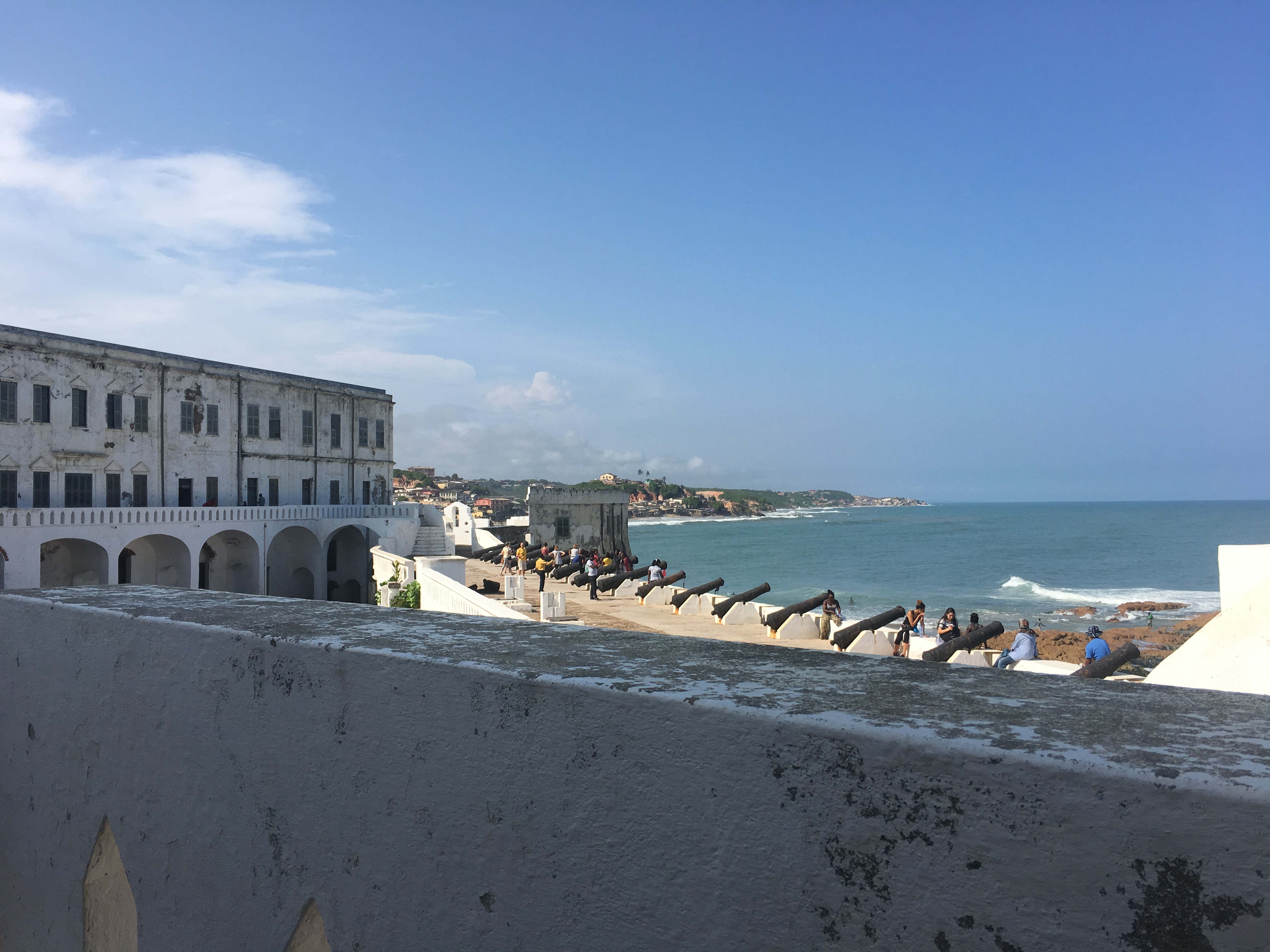When I was little my parents rented Roots, a mini-series from the 1970’s about American slavery. At first I did not understand why we were about to watch a show that was going to take up an entire week of my time, but I quickly became engrossed in the series. This led to years of fascination with the history of slavery. Going to the slave castles was a huge reason why I wanted to go on this trip.

Despite the fact that both the Cape Coast Castle and the Elmina Castle were painted white in the 20th century, I could feel a negative and unsettling feeling when I arrived. This feeling only worsened as we went into the dungeons. Both castles had small, pitch black rooms with hardly any ventilation where the slaves had been kept. Each small room had held 200 slaves. They were forced to lay in their own body fluids and were only fed enough to barely stay alive. The slaves were kept there anywhere from two weeks to three months before the ships would come to take them. Even today, the smell of urine, blood, puke, and death still lingered in the dungeons. In some areas it was so strong I thought I was going to throw up.
“The walls have ears,” our tour guide said. “Unfortunately they don’t have mouths to speak.”
Above the dungeons were the governor’s rooms. In both castles they were spacious with beautiful views of the ocean and lovely, bright accent colors. The governor lived there while he kept thousands of people in dungeons below him. There was also a church for the slave traders in both castles.
When we walked through the Cape Coast Castle, our tour guide paused at a tiny, dark cell. He explained that this was where they kept the “naughty ladies,” the slave women who tried resisting being raped. At the Elmina Castle, there was a courtyard where slave women were brought out. They would stand and face a balcony where the governor would choose the woman he wanted.
At the Cape Coast Castle, we went to the “Door of No Return,” where slaves were brought out to the slave ships. I was very surprised when our tour guide opened the door to find hundreds of people getting on and off of boats and sorting, carrying, and selling fish. It was so shocking to one second be in a horrific time in history and another second be in 2016 seeing Ghanaians going about their lives.
When we were about to leave the Elmina Castle, we stopped at a room in the castle that was filled with bats. The locals leave them there and don’t disturb them. They believe they are the souls of the slaves who died in the castle.
